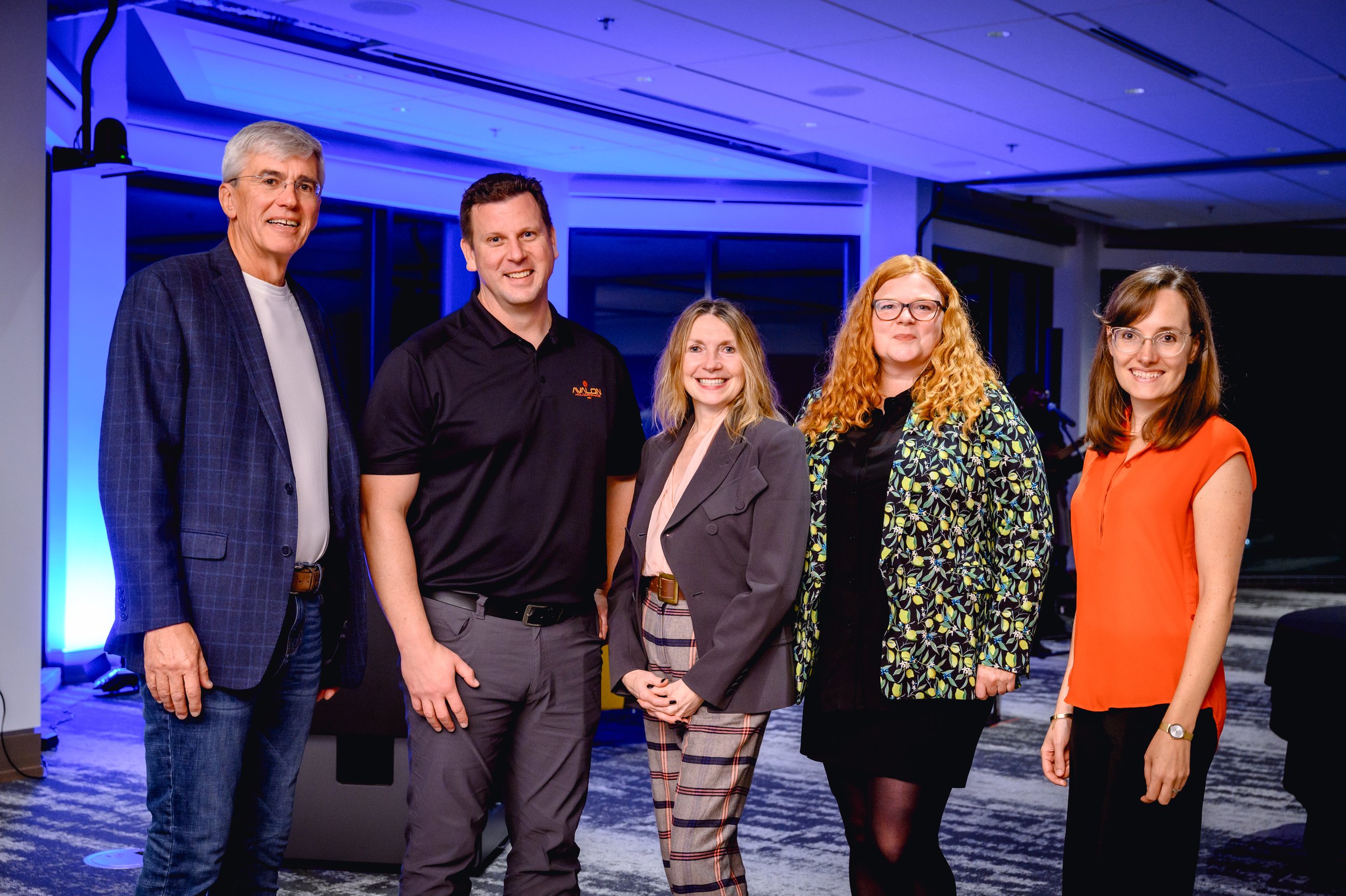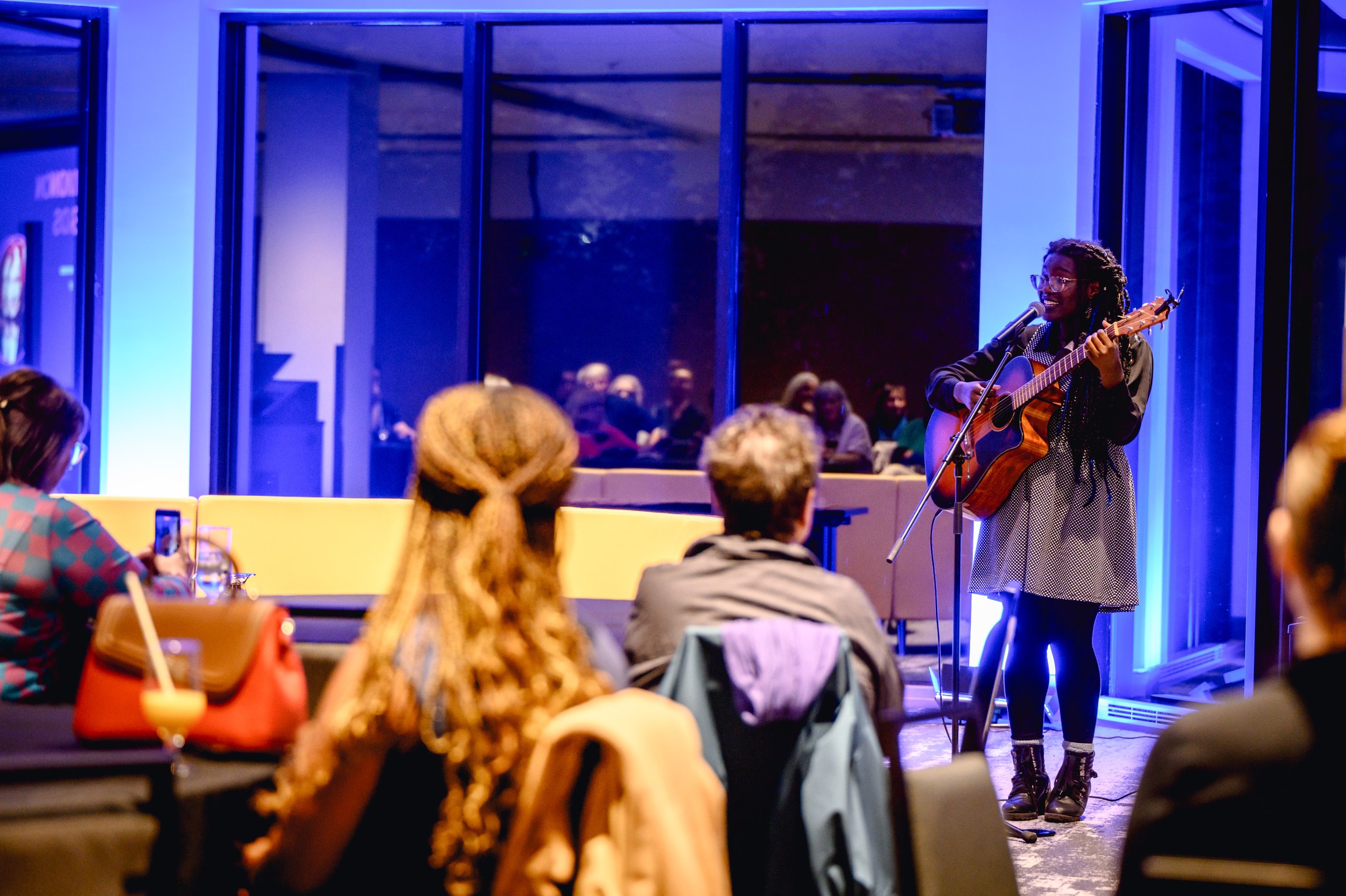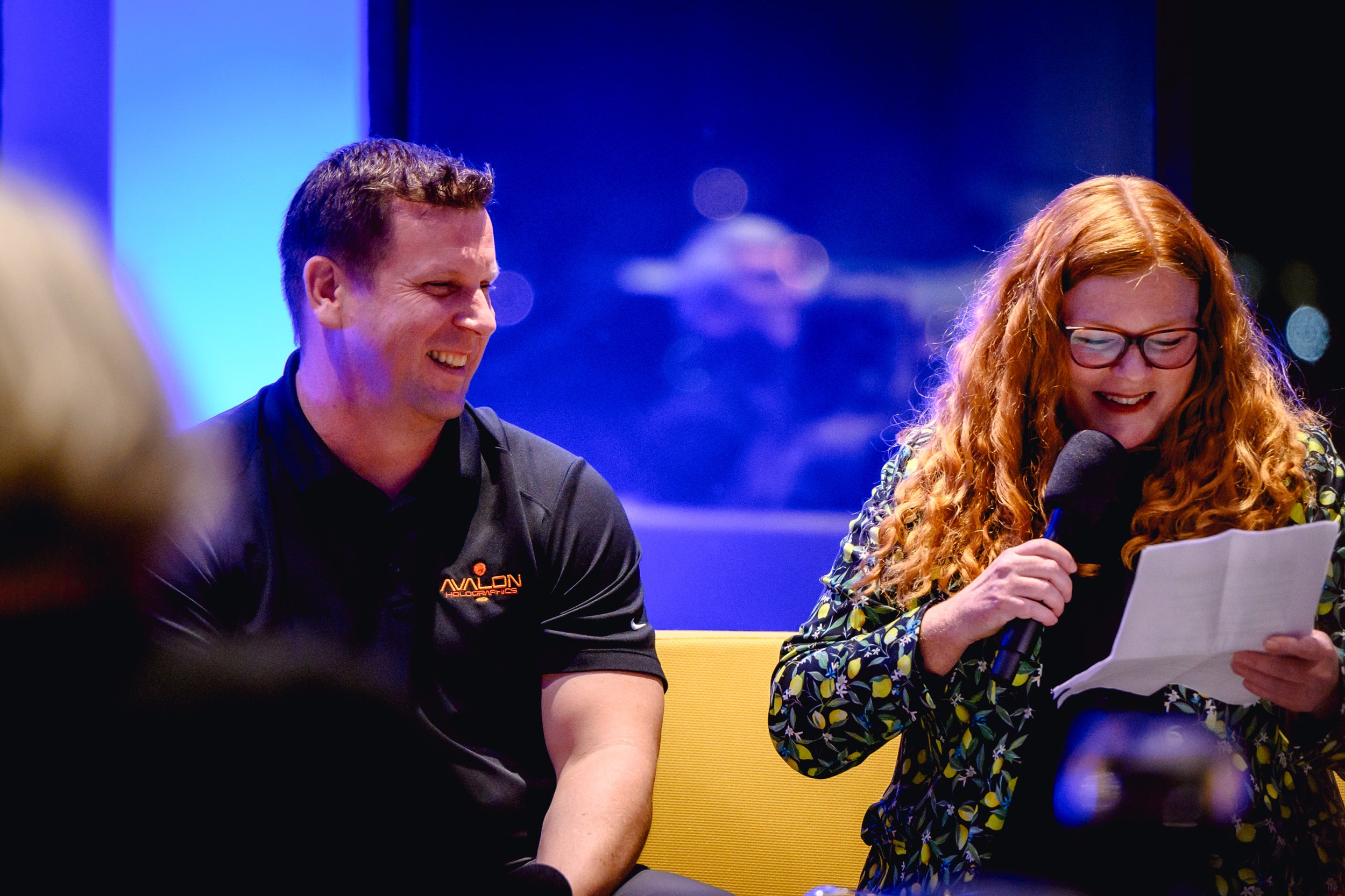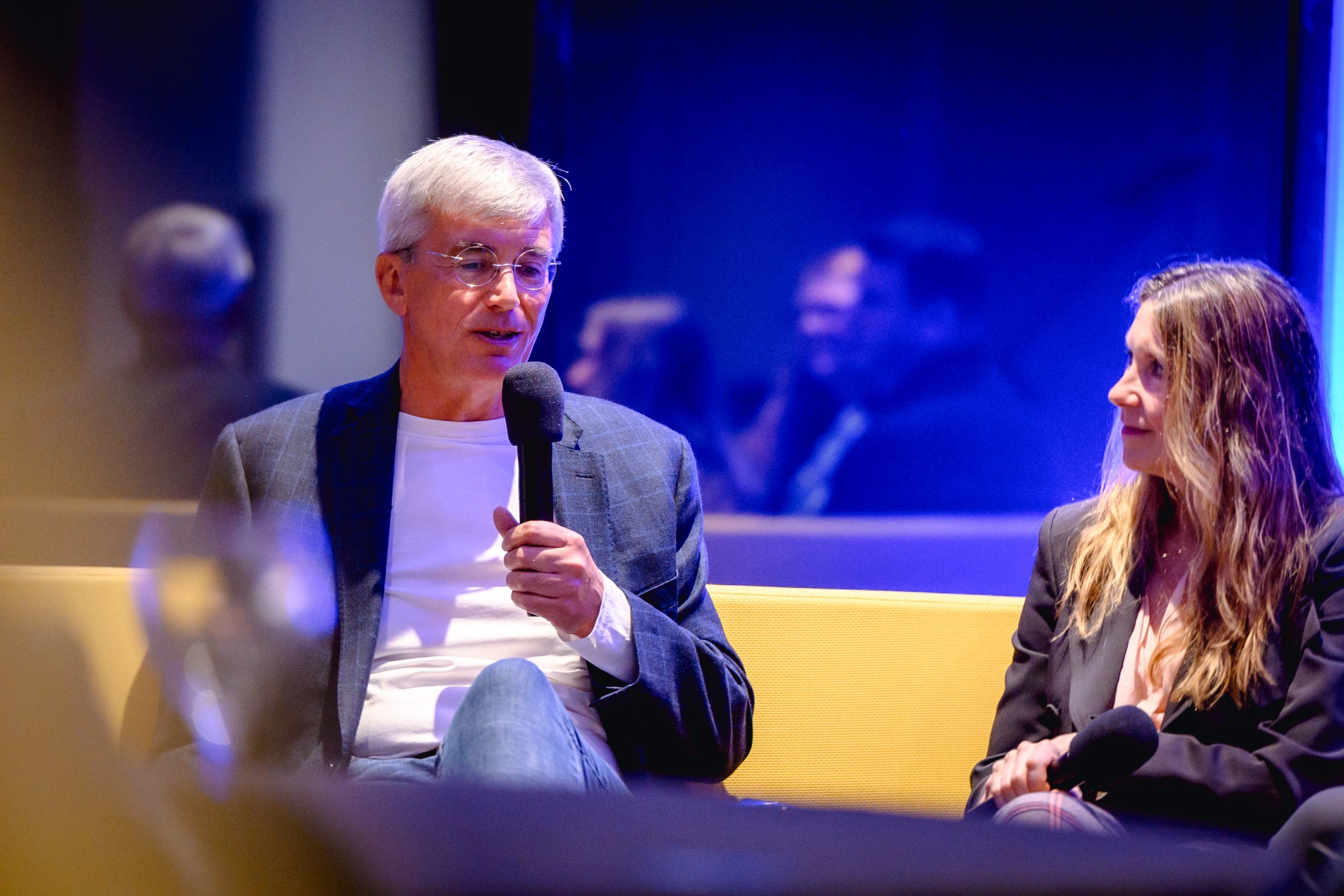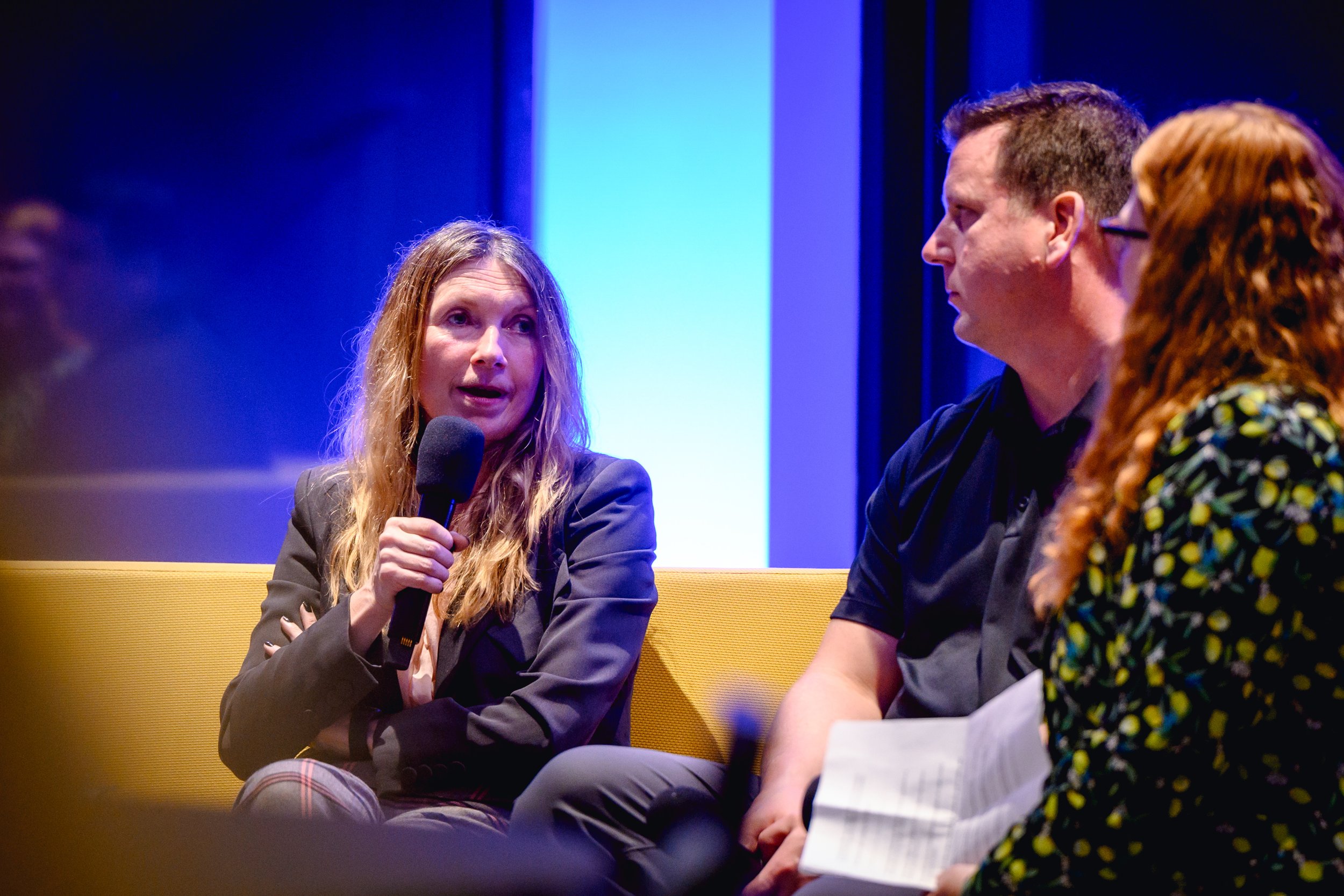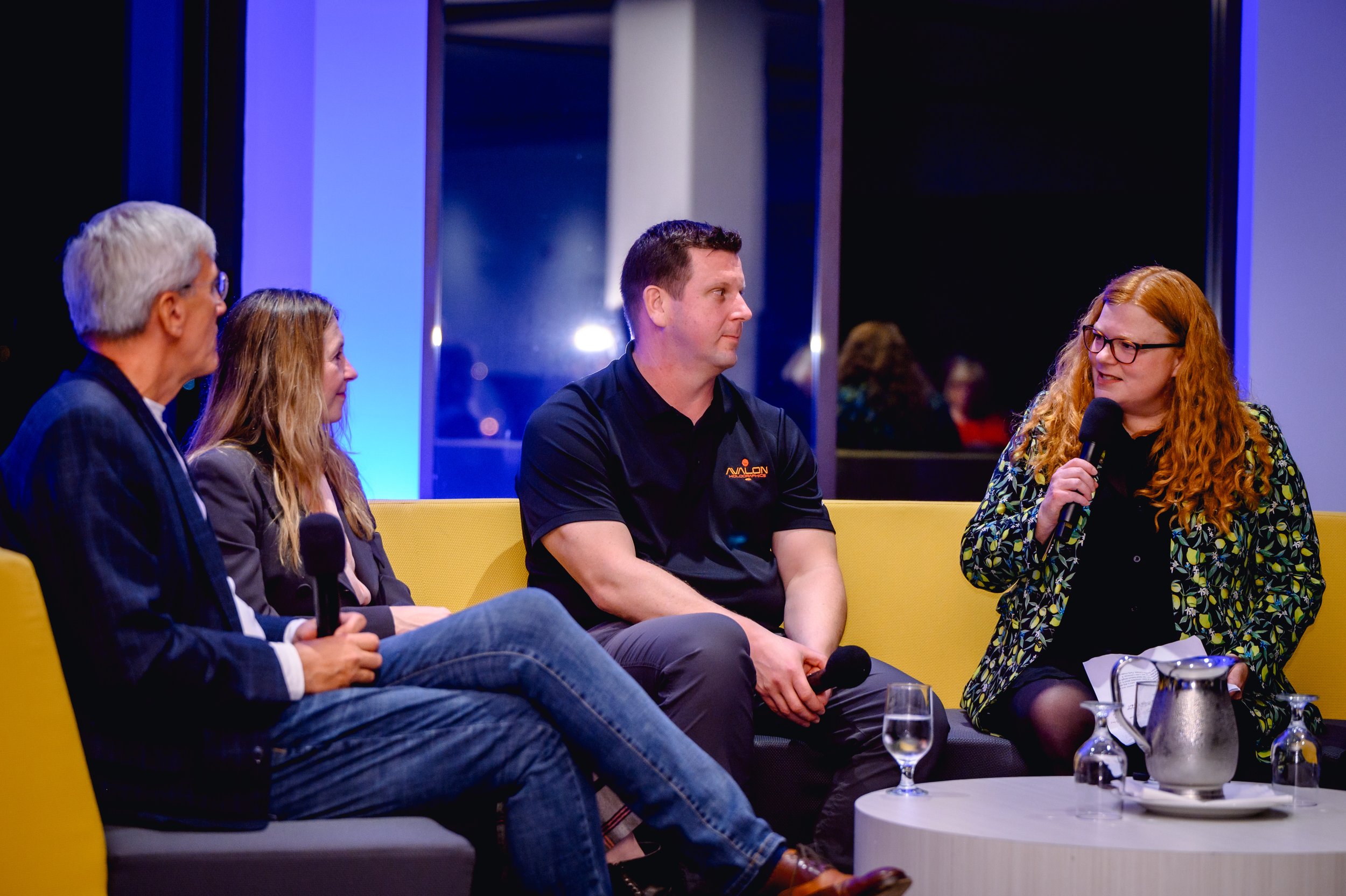Spotlight on (Un)common Threads: Creative Leadership
At Business & Arts NL, we strive to drive meaningful collaborations between the arts and business communities for the benefit of all. As part of that mission, we were proud to host a very special event in October at the Emera Innovation Exchange in St. John’s to gain deeper insights and inspiration.
(L-R): Jim Case, Wally Haas, Ruth Lawrence, Sarah Smellie, and Business & Arts NL Executive Director Amy Henderson.
(Un)Common Threads: Creative Leadership featured Wally Haas, co-founder of Avalon Holographics; Jim Case, architect and novelist; and Ruth Lawrence, director/writer/producer/actor. The event, facilitated by Canadian Press journalist and St. John’s arts community veteran Sarah Smellie, was hosted in-person and online, and opened with a musical performance by local singer-songwriter Valmy.
Valmy entertains the crowd before the panel discussion begins.
The crowd enjoyed a lively and inspiring conversation as the three leaders discussed what creativity looks like, how they cultivate creativity within their teams, collaboration, and what arts and business have in common with regards to tapping into creative potential and meeting common goals.
Here’s a short snippet from the first part of that conversation (edited for length).
Question:
Do you consider yourself a creative person and do you consider the work you do creative work? Do you see a fundamental difference between creativity and innovation?
Wally Haas fields a question from facilitator Sarah Smellie.
Wally Haas: I consider myself moderately creative, and what we have to do as a team is very creative. But I think sometimes the word ‘creative' is more of a qualitative connotation, and in these sort of engineering contexts, in this sort of business context, I think a different way to describe it would be ‘innovative.' You have to take something that may have been thought of before, imagined before, and try to create a situation where it’s perceived to be more useful or better or faster, etc.
But the only way that innovation occurs is through the creative process, creative thought, collaboration - just a celebration of different broaches and ideas.
I don't generally wake up and say, ‘Oh, I can't wait to be creative today!’ [laughs]. But I just get such an incredible charge and I just feel my purpose is to create the situation where people can do their best work and create an outcome that is very impactful.
I think creativity is more of a spark. I think creativity, to myself anyway, is more of a flash. It's an idea, it's a confluence of things that create a situation where you see something that might be possible, or a potential path; whereas innovation, to me, is more of a result. So you imagine something and then innovation is the result of all the labour to see if that spark actually meant anything.
Jim Case
Jim Case: Creativity, in architecture, it's a real team thing….within the team, there has to be a well of creativity somewhere or otherwise, like, putting up mundane buildings is not only unsustainable in the environmental sense, but it’s probably unsustainable in a firm sense. You won’t last long.
But then what is creativity, within an architectural setting? Because yes, there's a person who's coming up with those key design elements or an overall concept. But really, the people on the team - I think of all the technicians that have worked for me over the years, that are the ones who, with our assistance, are envisioning this disparate range of materials and construction items, and envisioning how this is all going to go together to create a structure that is not only aesthetically pleasing, but is also very safe...so I think that it's a real team thing.
There are bits of creativity in everyone's DNA and the problem is that people go through their whole life, but don't discover what that piece is. And that can be very, very unfortunate.
Ruth Lawrence
Ruth Lawrence: I'm lucky because I don't do any work on my own. Everything that I do, I work with a team.
I think it comes from being from a small place…I consider everything I do, that it affects the community. The community is involved in the things that I do.
In terms of do I consider myself a creative person, yes. But I also look at everybody around me and value the ideas they’re bringing to me.
A very long time ago when I was learning, I think I was in theatre school, someone said, ‘The main thing you do as an artist is surround yourself with people more talented than you are. And you can never be afraid of working with people who are better than you at the thing you do.’ And so I’ve never been afraid of that. That is one of the things that I went into going, ‘Right. To be good, surround yourself with really good people.’ Because they will expect you to be good, and you’ve got to kind of try to meet their level.
It was Sherry White who - I interviewed her for a magazine one time - and I said, ‘How do you approach each piece of work you do?' And she said, and I quote this often, ‘My best advice for someone is find someone whose work you love, and compete with them lovingly.’ And I have taken that to heart.
That’s what I think my role is as an artist, is to bring people together, do the best work we can, and then hopefully inspire someone else to do even better work so I can look at it and go, ‘Okay, now that's the best. Now we've got to go further.'


